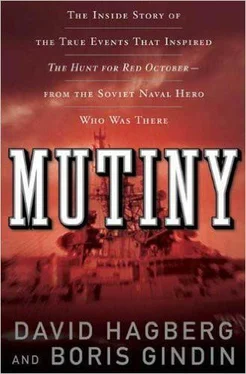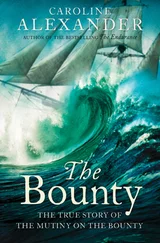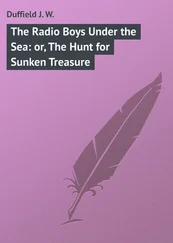They were busy doing other things, like killing the kulaks, their own people, by the millions. In fact, by the end of WWII, when the body count of Jews killed by Hitler topped 6 million, the body count of kulaks, or peasants, killed by Stalin may have topped 40 million, though nobody knows for sure.
During the Winter War in 1939, the Soviet navy saw a little action in the Baltic, but it wasn’t until Hitler’s 1941 Operation Barbarossa that the Soviet Union finally woke up to the fact that if it wanted to be a world power it needed a modern navy. It was too late to play catch-up in WWII. In fact, most of the Soviet Navy consisted of ex-U.S. Navy Lend-Lease destroyers, and what navy the Soviets had in the Baltic was blocked for the duration in Leningrad and Kronshtadt by German and Finnish minefields. But the seed of an idea had been firmly planted in Moscow.
After the war the Soviets went on an all-out crash program of shipbuilding, starting with submarines from homegrown designs supplemented by designs liberated from the Nazis and liberated from the United States and other Western nations. Although in the early days the Soviets were almost always one generation behind NATO boats, they were cranking out warships at a furious pace.
Next the Soviets turned to their surface fleet, arming just about anything that could float, no matter what size, with a lot of missiles, including the big cruisers of the Kirov class that displaced 24,300 tons and then in the sixties and early seventies their helicopter aircraft carriers the Moskva and Leningrad, followed up by the Kiev-class ships. The Soviets could never hope to match the U.S. advantage in super-carriers, so they had to concentrate on their submarine fleet and ship-to-ship missiles. Anyway Stalin didn’t really understand sea power and did not want to spend the money on aircraft carriers.
All this was during the heady days of Sputnik and Yuri Gagarin and the race into space on which the Soviets had a lock, while the Soviet navy had all it could do to defend its own coasts from attack or invasion along the Atlantic, Pacific, and Arctic oceans and the Black, Caspian, and Baltic seas. There were four fleets: the Northern, based at Murmansk-Severomorsk, with at one point more than 170 submarines; the Pacific, based at Vladivostok; the Black Sea at Sevastapol; and the Baltic at Baltiysk. Plus by 1975 Soviet flotillas and squadrons were deployed in the Mediterranean Sea and the Indian Ocean with access to supply and repair ports in Cuba, Syria, Libya, Ethiopia, the People’s Democratic Republic of Yemen, the Seychelles, and Vietnam.
All of that rebuilding, all of the modernization of the fleet, all of the worldwide deployments, all of the drive for parity with NATO, and especially the United States, and all of the Soviet navy’s success belonged to one man, Admiral of the Fleet of the Soviet Union Sergei Gorshkov, who understood two basic facts of life. The first was that the Soviet Union had to become a world naval power, with not just a coastal defense force but an arm of the military that could project its power everywhere on the globe. And the second was that the Soviet Union could never hope to match the U.S. Navy ship-for-ship. There wasn’t the time, the money, or the technology to achieve such a dream.
The main threats that the U.S. Navy posed against the Soviet Union were aircraft carriers and ballistic missile submarines. Gorshkov set about building a navy of warships equipped with powerful missile systems that could damage and sink even a supercarrier, and a navy of warships that could find and sink ballistic missile submarines.
But it wasn’t easy, especially in a nation whose heroes seemed to go in and out of favor faster than Western women’s fashions. His predecessor, Admiral Nikolai Kuznetsov, was around in 1956 when Nikita Khrushchev came to power and decided to scrap most of the navy’s big surface ships, which in the Party Secretary’s mind were draining the fragile economy. When Kuznetsov objected, he was fired and the forty-six-year-old Gorshkov was appointed to take his place. But the new boss of the Soviet navy knew when to keep his mouth shut, when to slip in through the back door, and when to finesse the Kremlin. In fact, Gorshkov long outlasted Khrushchev.
One of the early examples of how the wily admiral finessed the Kremlin leadership was the way in which he convinced the Communist Party that a strong navy was not only a necessity but also a bona fide part of the Russian national heritage. The superpowers of the United States, Great Britain, and France had convinced the world that Russia’s real power was as a land force. Her great armies were poised to pour across the Polish plains into Western Europe, and nothing but an all-out nuclear war could stop them.
This so-called Land Power Doctrine was imperialistic propaganda and nothing more, according to Gorshkov The doctrine’s only purpose was to keep the USSR from becoming a sea power, yet Russia had the world’s longest coastline and Russians have always loved the sea.
“It’s the Soviet manifest destiny to go to sea,” Gorshkov argued successfully. “Our navy will become the faithful helper of the army.” And the admiral’s timing was impeccable. It was 1962, in the midst of his campaign, when the U.S. Navy blockaded Cuba, turning the Soviet navy away. Moscow was finally convinced, and one of the most powerful and versatile navies of the world was reborn.
Gorshkov realized that a Russian navy faced three major problems: ice, choke points, and long distances. Once he was given the go-ahead, he attacked all three.
Most Soviet navy bases are up around the Arctic Circle or close to it and are frozen over for much of the year. Arkhangel’sk in particular is blocked by ice six months out of the year. Vladivostok in the Far East is unusable for several months each year, and even the Baltic Fleet at Baltiysk and Riga is closed down sometimes for three months.
Gorshkov partially solved the problem by building the world’s most powerful fleet of icebreakers. No longer were the northern ports closed when they were most needed.
The admiral’s solution to the other two problems was as brilliant as it was simple. If it came to war, the U.S. Navy could effectively hold almost the entire Soviet fleet close to home by mining and blockading the narrow passages leading to the open ocean. In the Pacific Ocean the La Perouse Strait, north of Japan, and to the south the Tsushima Strait are the only ways out for the Soviets. In the Atlantic the so-called GIUK, or Greenland-Iceland-United Kingdom gap, could easily be controlled by the Allies. Then there are passages that are even tougher for the Soviet navy: the Turkish and Gibraltar straits, the Suez Canal, and up north the Skagerrak-Kattegat straits.
The way around this was to deploy Russian warships beyond these choke points, so that if it came to a war, they would not be held close to home. But that was the second part of the problem. In the early days Soviet warships could not be resupplied at sea. They had to return home for that. Admiral Gorshkov ordered the design and building of a fleet of supply ships, and he strongly urged the Kremlin to use its considerable diplomatic skills to set up places overseas where Soviet ships could be restocked. Angola, South Yemen, and Cuba were among the first.
As a result of these policy changes, the Storozhevoy stayed out to sea for six months at a stretch and stopped at Havana for something more than Gindin’s trip ashore to visit with VIP wives.
Under Gorshkov the navy became not just a stepchild of the Russian military establishment but an extremely important leg in what was called the nuclear triad for deterrence, which consisted of land-launched nuclear missiles, air-launched nuclear missiles, and nuclear missiles launched usually from ballistic missile submarines. The Soviet navy not only operated a fleet of the largest missile subs but also could launch nukes against NATO from a wide range of surface ships, and its ASW platforms, such as the Storozhevoy, were very good at what they were designed to do. Namely, to protect the Rodina.
Читать дальше












